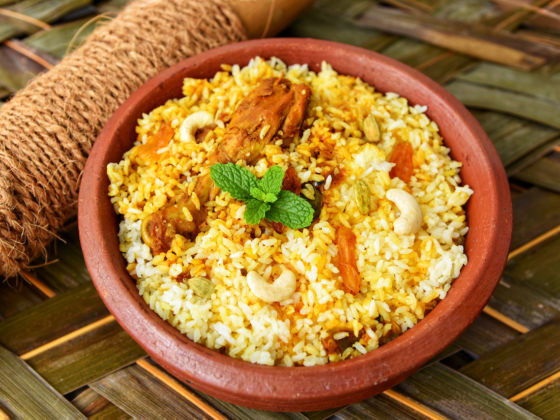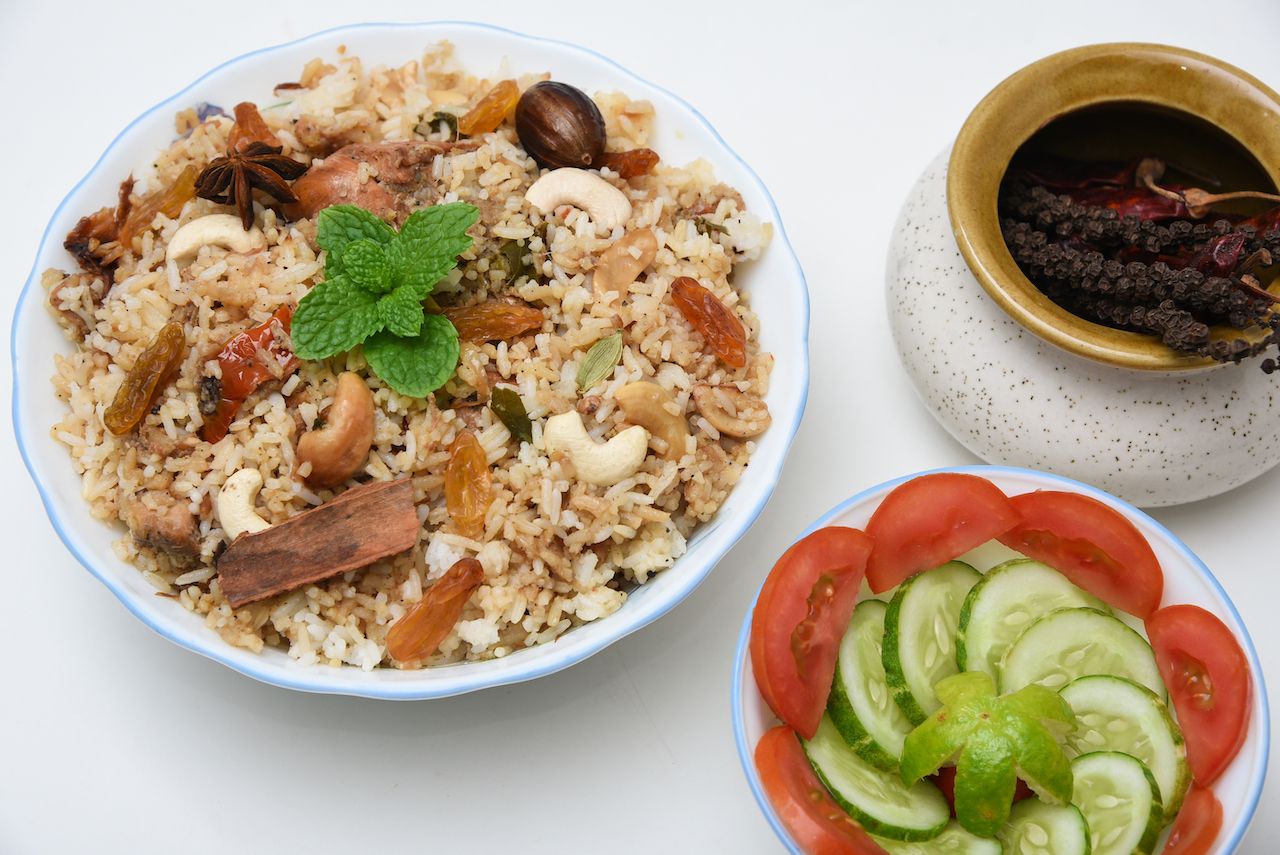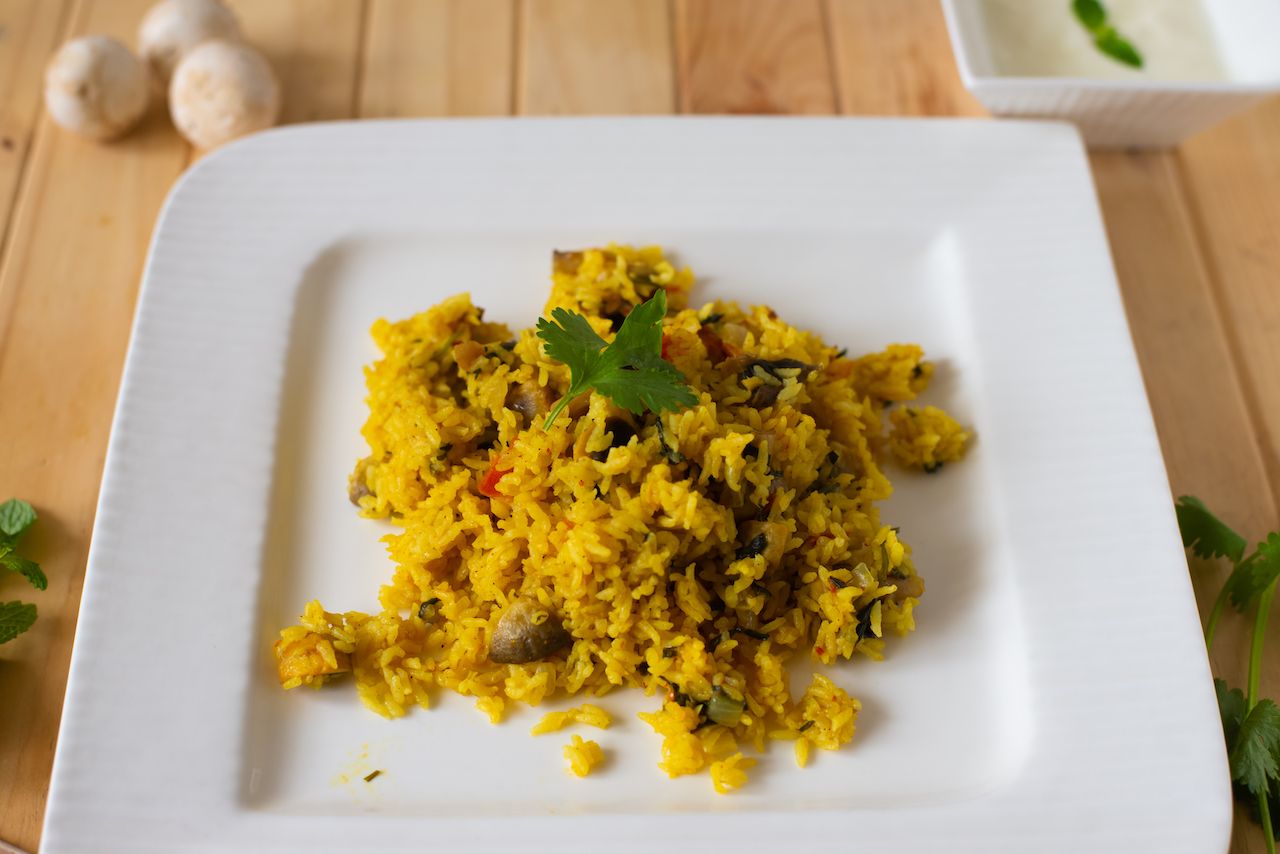Of all the culinary classics synonymous with the rich food heritage of India, biryani is in a class of its own. Variations on the simple rice, meat, vegetable, and spice dish can be found in every section of India, though it’s not quite known how it became such a staple.
One theory traces the origins to Persia (where berian means “fried before cooking”) and the Mughals, who brought the dish to the Indian subcontinent in the 16th century. Another is that it’s an evolution of the plov, or rice pilaf, brought to the region by the Macedonian Alexander the Great around 327 BCE. Yet another theory is that biryani has local roots in the simple rice and beef dish from the Hindu scripture Brihadaranyaka Upanishad around 700 BCE.




